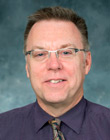Jun. 2, 2015
 I was very fortunate to have a brilliant and gifted mentor open the world of imaging sciences to me.
I was very fortunate to have a brilliant and gifted mentor open the world of imaging sciences to me.
My mentor, Atis K. Freimanis, M.D., was one of the pioneers of sonography during the ultrasonic boom in the 1960s. He was my research advisor during my undergraduate work at Ohio State University. One of my first research projects with Dr. Freimanis was based on the physics of ultrasound. It involved constructing a container with solid Jell-O and strategically placed marbles to test the registration of the equipment in a clinical lab. It was a fairly tedious project, and I had no idea that I was working with the prototype for Tissue Mimicking QC Phantoms, which are commonly used in labs today.
Currently, research in the radiologic sciences is underdeveloped and rarely conducted by scientists from within the profession. As imaging scientists, we have unique research questions that are grounded in the use of ionizing and nonionizing radiation that directly translate to patient care. I get very excited when conducting clinical trials, as this work eventually will change the way we provide health care.
Unfortunately, the lack of funding for research in the radiologic sciences is a significant reason few within the profession are conducting the research, and it’s also preventing younger scientists from pursuing research questions. Scientists are struggling to complete their ongoing work, and I see my doctoral students wondering how they can start their own research when funding is so hard to obtain.
The ASRT Foundation is helping to prevent a “dark age” for research in our profession by financing the work of imaging scientists and researchers. Our profession will need to invest in its young researchers in order to continue to produce scientific advancements.
I am the grateful recipient of two research grants from the ASRT Foundation. Their support helped me complete a pilot study on the imaging of vascular flow within the median nerve. This work resulted in several published articles in ranked publications and provided pilot data for a federal grant submission to the National Institutes of Health. This work would have been very difficult to complete without the Foundation’s support.
As a community we promote professional education, and encouraging students to ask challenging questions is essential. This is a huge part of fanning the flames for the next generation of scientific discovery. I have the joy of seeing some of my mentees breaking into the research field. It’s rewarding to know that their discoveries will someday advance the profession.
One of my mentees is an associate professor at the University of California and is focusing on how to image and analyze the pelvic muscles. Another one of my doctoral students is conducting a randomized clinical trial with contrast media to extend our understanding of nerve vascularity, while still another mentee is poised to make a huge impact in the field of sports medicine with his research in using MR and sonography to screen for shoulder injuries in young athletes.
Dr. Freimanis, my mentor, was so patient and inspiring; I hope to leave that same legacy. I strive every day to ask better questions and improve my statistical acumen. I want to develop a scholarship for radiologic science students interested in pursuing a career as research scientists. Above all else, I don’t want our progress to be thwarted by a lack of funding.